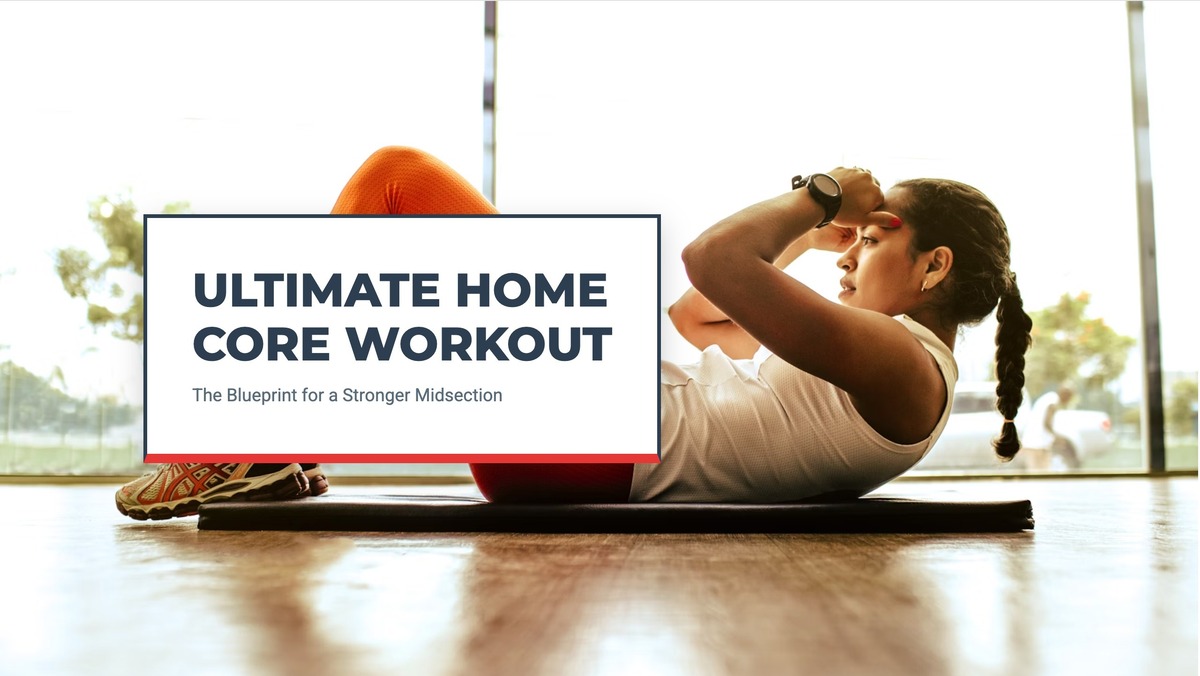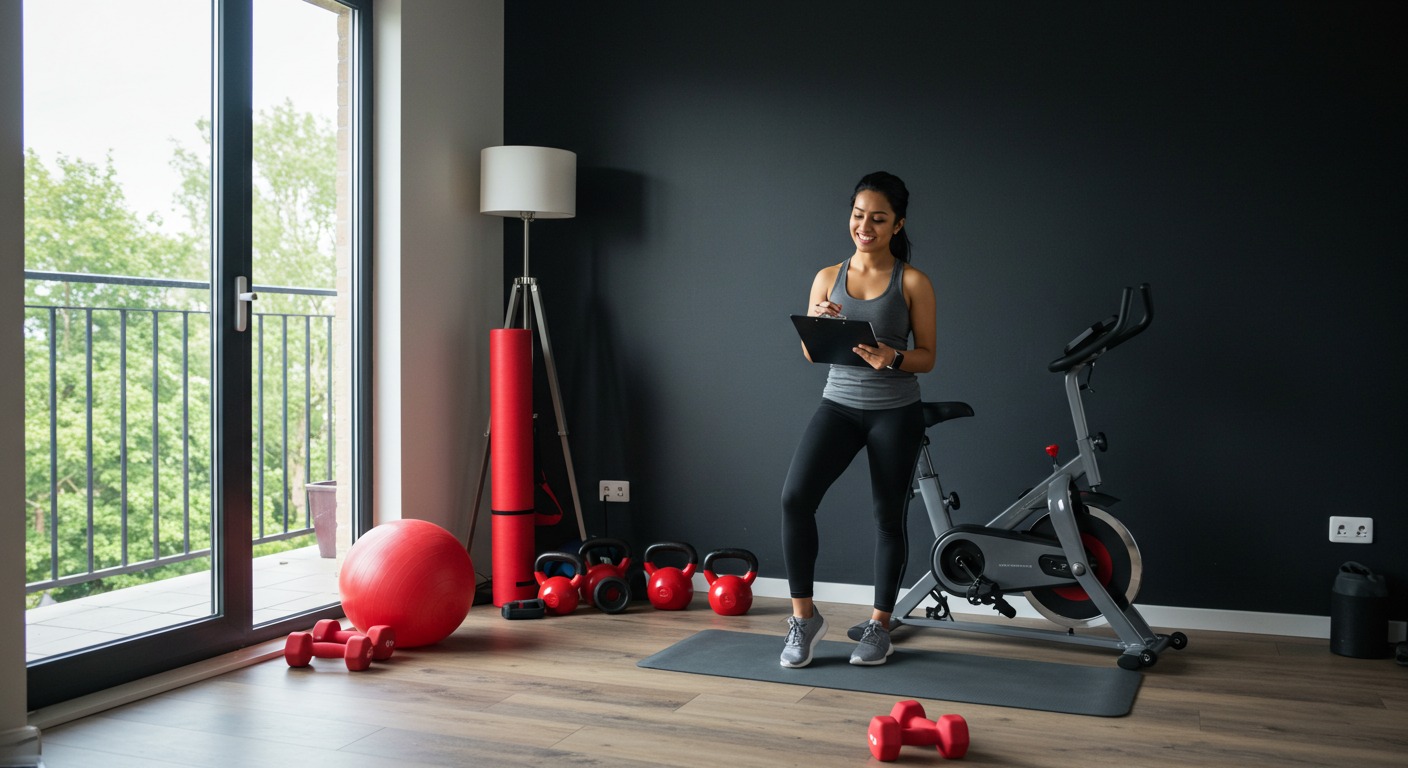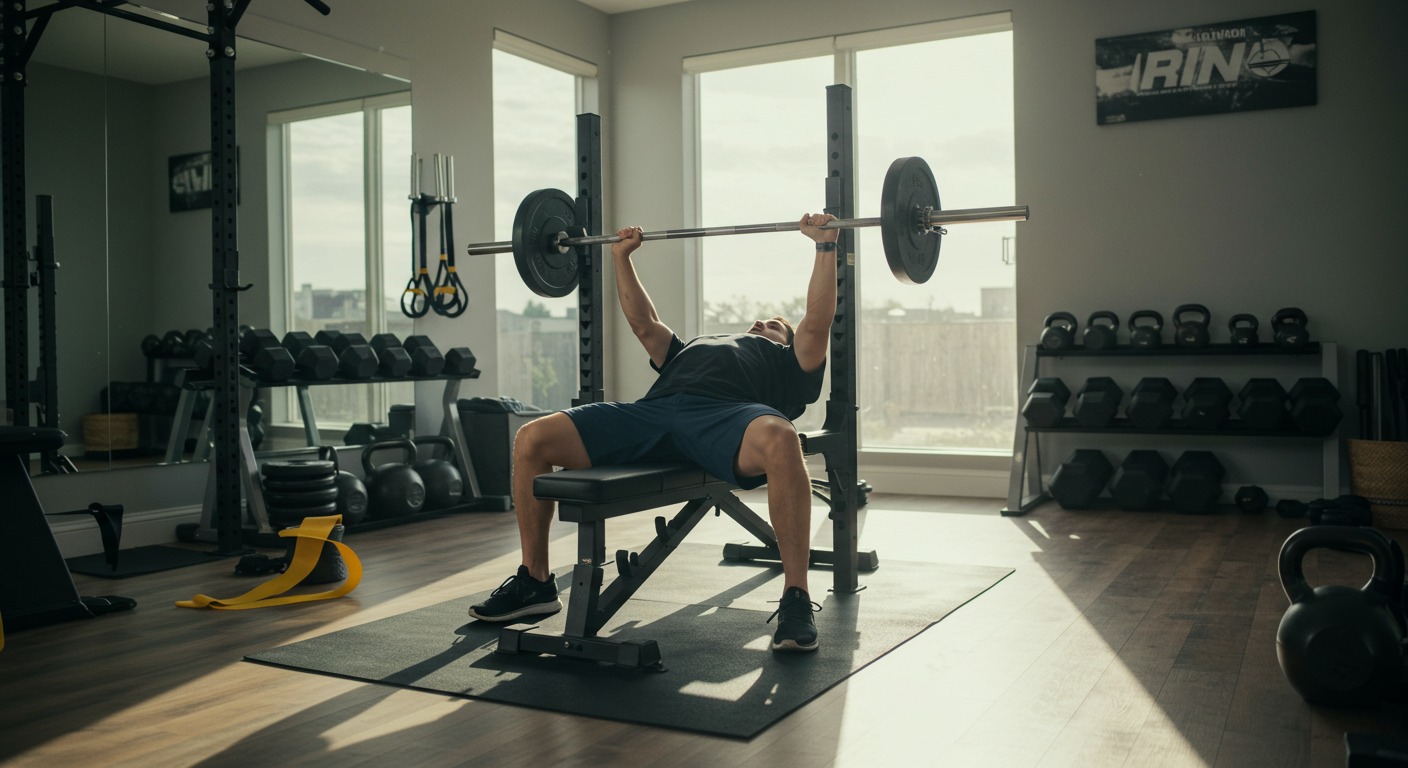Disclosure Information
This blog contains affiliate links. If you make a purchase through one of these links, our team may earn a commission at no extra cost to you. Learn more. Thanks for your support!
A strong core is the foundation of every movement you make. Whether you’re lifting groceries, playing with your kids, or pursuing athletic goals, your core muscles provide stability and power.
Building core strength at home doesn’t require expensive equipment or gym memberships. With the right exercises and consistent practice, you can develop a powerful midsection using just your body weight.
Why Core Strength Matters More Than You Think
Your core isn’t just about achieving visible abs. It’s a complex system of muscles that includes your diaphragm, pelvic floor, transverse abdominis, and multifidus.
These muscles work together to stabilize your spine and pelvis during movement. A weak core can lead to poor posture, back pain, and increased injury risk.
Research shows that 85% of people will experience back pain at some point in their lives (source: American Association of Neurological Surgeons). Many of these cases stem from weak core muscles and poor movement patterns.
Strong core muscles improve your performance in virtually every physical activity. They enhance balance, reduce injury risk, and make daily tasks easier to perform.
Understanding Your Core Anatomy
The core consists of multiple muscle groups working as an integrated unit. Each group serves specific functions in movement and stability.
The Deep Core Muscles
The transverse abdominis acts like a natural weight belt. It wraps around your torso and provides deep stability for your spine.
The diaphragm controls breathing and helps create intra-abdominal pressure. This pressure supports your spine during lifting and movement.
The pelvic floor muscles support your internal organs. They work with other core muscles to maintain proper posture and stability.
The multifidus muscles run along your spine. They provide segmental stability and help maintain proper spinal alignment.
The Superficial Core Muscles
The rectus abdominis creates the “six-pack” appearance. It flexes your spine and helps with breathing during exercise.
The internal and external obliques rotate your torso. They also help with lateral flexion and contribute to spinal stability.
The erector spinae muscles extend your spine. They work with other core muscles to maintain proper posture.
Benefits of Home Core Training
Training at home offers unique advantages for core development. You can focus on form without distractions or time constraints.
Home workouts eliminate commute time and scheduling conflicts. This consistency is crucial for building lasting core strength.
You can progress at your own pace without comparing yourself to others. This reduces pressure and allows for better focus on technique.
Essential Equipment for Home Core Training
Most effective core exercises require minimal or no equipment. Your body weight provides sufficient resistance for building strength.
A yoga mat provides comfort and stability during floor exercises. It also helps define your workout space and improves grip.
A stability ball adds instability challenges to traditional exercises. This forces your core muscles to work harder for balance.
Resistance bands offer variable resistance for core exercises. They’re portable, affordable, and provide smooth resistance throughout movements.
The Complete Home Core Exercise Guide
Beginner Core Exercises
1. Dead Bug
The dead bug teaches core stability while moving your limbs. It’s perfect for beginners learning proper core engagement.
Lie on your back with arms extended toward the ceiling. Bend your knees to 90 degrees with shins parallel to the floor.
Slowly lower your right arm overhead while extending your left leg. Keep your lower back pressed against the floor throughout.
Return to starting position and repeat with opposite arm and leg. Focus on controlled movements and steady breathing.
2. Bird Dog
Bird dog improves core stability and coordination. It also strengthens your posterior chain muscles.
Start on hands and knees with wrists under shoulders. Keep your spine in neutral position throughout the exercise.
Extend your right arm forward while lifting your left leg behind you. Hold for 2-3 seconds while maintaining balance.
Lower with control and repeat on the opposite side. Keep your hips level and avoid rotating your torso.
3. Modified Plank
The modified plank builds isometric core strength. It’s an excellent starting point for developing plank endurance.
Start in a push-up position but drop to your knees. Keep your body straight from knees to head.
Hold this position while breathing normally. Focus on keeping your core engaged and hips aligned.
Gradually increase hold time as you build strength. Progress to full plank when you can hold for 60 seconds.
Intermediate Core Exercises
4. Standard Plank
The plank is a fundamental core exercise that builds total-body stability. It targets multiple muscle groups simultaneously.
Start in a push-up position with forearms on the ground. Keep your body straight from head to heels.
Engage your core and glutes to maintain proper alignment. Avoid sagging hips or raised buttocks.
Hold for 30-60 seconds while breathing steadily. Focus on quality over duration for maximum benefit.
5. Side Plank
Side planks target your obliques and lateral core strength. They also improve shoulder stability and hip alignment.
Lie on your side with forearm on the ground. Stack your feet and lift your hips to create a straight line.
Keep your core tight and shoulders stacked. Hold for 20-45 seconds per side.
Progress by lifting your top leg or adding arm movements. Maintain proper form throughout the exercise.
6. Bicycle Crunches
Bicycle crunches combine rotation with flexion for comprehensive core training. They effectively target your obliques and rectus abdominis.
Lie on your back with hands behind your head. Lift your shoulders off the ground and bring knees to 90 degrees.
Rotate your torso to bring right elbow toward left knee. Simultaneously extend your right leg straight.
Switch sides in a pedaling motion while maintaining core engagement. Control the movement and avoid pulling on your neck.
7. Mountain Climbers
Mountain climbers provide dynamic core training with cardiovascular benefits. They improve core stability under movement.
Start in a plank position with hands on the ground. Keep your core tight and body aligned.
Drive one knee toward your chest, then quickly switch legs. Maintain plank position throughout the exercise.
Continue alternating legs at a controlled pace. Focus on core stability rather than speed.
Advanced Core Exercises
8. Hollow Body Hold
The hollow body hold builds intense core strength and body awareness. It’s a foundational exercise for advanced movements.
Lie on your back and press your lower back into the floor. Lift your shoulders and legs off the ground.
Create a “hollow” shape with your body. Hold this position while breathing steadily.
Start with 15-30 second holds and gradually increase duration. Maintain the hollow position throughout.
9. L-Sit Progression
L-sits develop incredible core strength and shoulder stability. They require significant practice and progression.
Start seated with legs extended and hands on the ground. Press through your hands to lift your body.
Keep your legs straight and parallel to the floor. Hold for as long as possible with proper form.
Progress from bent-knee versions to full L-sits. This exercise requires patience and consistent practice.
10. Dragon Flag
The dragon flag is an advanced exercise that challenges total-body control. It requires significant core strength and stability.
Lie on a bench and grab the bench behind your head. Lift your entire body using only your shoulders as contact points.
Lower your body slowly while keeping it straight. Stop just before touching the bench.
This exercise requires mastery of basic movements first. Progress gradually to avoid injury.
Creating Your Home Core Workout Routine
Weekly Training Schedule
Research shows that training your core 3-4 times per week optimizes strength gains while allowing adequate recovery (source: Journal of Strength and Conditioning Research).
| Day | Focus | Duration |
|---|---|---|
| Monday | Basic Stability | 20 minutes |
| Wednesday | Dynamic Movement | 25 minutes |
| Friday | Advanced Holds | 20 minutes |
Beginner Routine (Weeks 1-4)
Start with basic exercises to build foundation strength. Focus on proper form over intensity or duration.
Perform each exercise for 30 seconds with 15-second rest periods. Complete 2-3 rounds of the entire circuit.
Include dead bugs, bird dogs, modified planks, and gentle stretching. Progress slowly to avoid overuse injuries.
Intermediate Routine (Weeks 5-12)
Add more challenging exercises as your strength improves. Increase hold times and add dynamic movements.
Perform exercises for 45 seconds with 10-second rest periods. Complete 3-4 rounds of the circuit.
Include standard planks, side planks, bicycle crunches, and mountain climbers. Focus on movement quality.
Advanced Routine (Weeks 13+)
Incorporate advanced exercises that challenge total-body control. Emphasize precision and perfect form.
Perform exercises for 60 seconds with minimal rest. Complete 4-5 rounds for maximum challenge.
Include hollow body holds, L-sit progressions, and dragon flag variations. Progress methodically.
Common Core Training Mistakes to Avoid
Neglecting Proper Form
Poor form reduces exercise effectiveness and increases injury risk. Always prioritize technique over intensity or duration.
Keep your spine neutral during all exercises. Avoid excessive arching or rounding of your back.
Breathe steadily throughout each exercise. Don’t hold your breath during challenging holds.
Overtraining Your Core
Your core muscles need recovery time like any other muscle group. Avoid training them intensely every day.
Listen to your body and take rest days when needed. Soreness is normal, but sharp pain indicates problems.
Ignoring Progressive Overload
Your muscles adapt to consistent challenges over time. Gradually increase difficulty to continue seeing progress.
Add time, repetitions, or exercise complexity as you improve. Track your progress to ensure advancement.
Measuring Your Core Progress
Strength Benchmarks
Track your plank hold time as a basic strength indicator. Aim for 60-90 seconds for good core endurance.
Monitor your ability to perform exercises with proper form. Quality movement indicates functional strength.
Functional Improvements
Notice improvements in daily activities like lifting, carrying, and standing. These indicate real-world strength gains.
Better posture throughout the day suggests improved core stability. Your body naturally maintains alignment.
Performance Metrics
Record exercise durations and repetitions in a training log. This helps track consistent progress over time.
Take progress photos to visualize changes in core definition. Combine with measurements for complete tracking.
Nutrition for Core Development
Fueling Your Workouts
Proper nutrition supports recovery and muscle development. Focus on whole foods that provide sustained energy.
Consume adequate protein to support muscle repair and growth. Aim for 0.8-1 gram per pound of body weight.
Hydration Importance
Stay hydrated before, during, and after workouts. Proper hydration supports muscle function and recovery.
Drink water consistently throughout the day. Don’t wait until you feel thirsty to hydrate.
Recovery and Injury Prevention
Active Recovery
Light movement on rest days promotes blood flow and recovery. Consider gentle stretching or walking.
Focus on mobility work to maintain flexibility and movement quality. This prevents stiffness and compensation patterns.
Sleep and Recovery
Quality sleep is crucial for muscle recovery and growth. Aim for 7-9 hours of consistent sleep nightly.
Create a relaxing bedtime routine to improve sleep quality. Avoid screens before bed for better rest.
Listening to Your Body
Pay attention to pain versus normal exercise discomfort. Sharp or persistent pain requires attention.
Modify exercises if you experience discomfort. There’s always a way to work around minor issues.
Conclusion
Developing core strength at home is entirely achievable with consistent effort and proper programming. Start with basic exercises and progress gradually.
Remember that core strength is about function, not just appearance. Focus on building stability and control for real-world benefits.
Stay consistent with your training and be patient with progress. Core development takes time but provides lasting benefits.
Your home can become your strongest training ground. Use these exercises to build the foundation for lifelong health and fitness.
The journey to a stronger core starts with a single exercise. Begin today and experience the transformative power of consistent core training.


